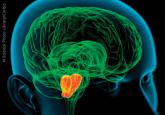Among patients with Parkinson’s disease, probable REM sleep behavior disorder (RBD) is associated with longer disease duration and more severe symptoms, according to research published March 3 in Neurology. In addition, patients with Parkinson’s disease and probable RBD may have elevated levels of α-synuclein and inflammatory factors, including nitric oxide and interleukin 1β, in CSF, compared with controls and patients with Parkinson’s disease without probable RBD.
Yang Hu, MD, a neurologist at Beijing Tiantan Hospital, and colleagues investigated clinical features and potential mechanisms involving α-synuclein oligomer and inflammation in patients with Parkinson’s disease and probable RBD. They recruited 225 patients with Parkinson’s disease from their specialized neurodegenerative outpatient clinic from April 2010 to July 2013. Patients with severe systemic diseases, such as anemia and heart failure, were excluded. Thirty-one controls also were selected.
Patients with Parkinson’s disease completed the RBD Screening Questionnaire (RBDSQ), a self-rating questionnaire comprising 13 items about clinical characteristics of RBD based on the International Classification of Sleep Disorders—Second Edition. Patients whose scores were 6 or greater were classified as having probable RBD. Patients whose scores were less than 6 were classified as not having probable RBD.
Approximately 31% of patients had probable RBD. The 69 patients in the probable RBD group had an average RBDSQ score of 8.01, while patients not classified as having probable RBD had an average score of 2.15. The probable RBD group had longer disease duration, more advanced disease stage, and more severe motor and nonmotor symptoms, including depression, anxiety, and fatigue. In 24 patients, probable RBD was identified before the onset of motor symptoms, indicating that RBD is a prodromal symptom of Parkinson’s disease, the authors said.
RBDSQ score increased with elevated α-synuclein oligomer levels in CSF, according to the authors. RBDSQ score also increased with higher interleukin 1β and nitric oxide levels in CSF, and with higher prostaglandin E2 level in serum.
The only factor to influence RBDSQ score was α-synuclein oligomer level in CSF. “These results imply that elevation of α-synuclein oligomer in the brain may be the pathogenesis of probable RBD in patients with Parkinson’s disease,” said Dr. Hu.
Inhibition of α-synuclein oligomer-related inflammation could be a novel target for treatment of sleep disorders, such as RBD, in patients with Parkinson’s disease, the researchers concluded.
